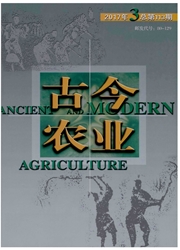

 中文摘要:
中文摘要:
壮族是典型的稻作民族。明清以来,其农作物的种植结构因受地形、气候等自然地理因素,以及农作物的引进、人口的迁移等人文地理因素的影响,壮族地区农作物种植结构具有显著的特征。主要是平原地区农作物种植的品种不断增加,但水稻种植一直占据绝对的主导地位,而玉米、麦等杂粮在种植结构中的比重,大致呈由平原、丘陵向山地不断提升的趋势。这种变化正是壮族适应边疆民族地区农业地理环境的结果。
 英文摘要:
英文摘要:
The typical Chuang people are good at rice planting. Ever since the Ming and Qing Dynasties, the planting structure of crops had changed greatly with significant characteris tics because of the natural geographical factors such as topography and climate as well as the human geographical factors such as the introduction of crops and movements of migration. In plain areas, the crop's varieties increased steadily, rice planting occupying the dominant po- sition, however, and from the plain to the mountains and hills, the proportion of corn, wheat and others in the planting structure had been rising continuously. The changes were the results by the environmental adaption of agricultural geography in border minority areas.
 同期刊论文项目
同期刊论文项目
 同项目期刊论文
同项目期刊论文
 期刊信息
期刊信息
